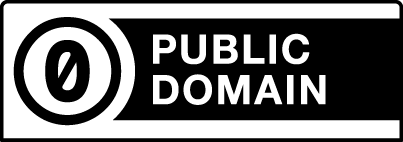Please use this identifier to cite or link to this item:
https://hdl.handle.net/2445/223788| Title: | Long-term exposure to nitrate and trihalomethanes in drinking water and gastric cancer: A multicase–control study in Spain (MCC-Spain) |
| Author: | Donat Vargas, Carolina Kogevinas, Manolis Castaño-Vinyals, Gemma Pérez Gómez, Beatriz Aragonès Sanz, Núria Guevara, Marcela Gómez Acebo, Inés Molina, Antonio Fernandez-Tardon, Guillermo Vanaclocha Espi, Mercedes Molina Barceló, Ana Moreno Aguado, Víctor Pollán, Marina Villanueva, Cristina M. |
| Keywords: | Consum d'aigua Nitrats Càncer gastrointestinal Water consumption Nitrates Gastrointestinal cancer |
| Issue Date: | 15-Apr-2025 |
| Publisher: | National Institute of Environmental Health Science |
| Abstract: | Background: Disinfection byproducts and N-nitroso compounds (NOC) formed endogenously after nitrate ingestion have been shown to be carcinogenic in animal studies, but epidemiological evidence is limited, especially in relation to gastric cancer. Objective: We evaluated the association between drinking water exposure to nitrate and trihalomethanes (THMs) and gastric cancer in a multicase–control study conducted in Spain (MCC-Spain). Methods: In 2008–2013, 254 hospital-based incident gastric cancer cases and 2,365 population-based controls were recruited, providing information on residential histories and type of water consumed. Adult lifetime average nitrate and THM levels in residences from age 18 until 2 years before the interview were estimated and linked with water consumption information to calculate waterborne ingested nitrate, brominated (Br)-THMs, and chloroform. Odds ratios (OR) and 95% confidence intervals (CI) were estimated using logistic regression, with adjustment for potential confounders. We assessed the effect modification by factors influencing endogenous NOC formation. Results: Median [percentile 25th (P25)–percentile 75 (P75)] (P25–P75) lifetime waterborne ingested nitrate (mg/day), Br-THMs (μg/day), and chloroform (μg/day) were 2.7 (1.4–5.6), 3.8 (1.5–8.1), and 12.2 (4.0–23.7), respectively, in cases and 3.8 (1.8–8.5), 5.7 (2.6–19.2), and 12.9 (4.6–24.5) in controls, respectively. Adjusted OR (95% CI) for gastric cancer comparing nitrate intake >9.7 vs. ≤9.7mg/day (percentile 80th, P80) was 1.42 (0.88, 2.29). This association was more pronounced among participants with low consumption of vegetables [2.24 (1.02, 4.91)], vitamin C [2.10 (0.94, 4.71)], and vitamin E [2.81 (1.16, 6.78)] and among those with high consumption of alcohol [2.78 (0.98, 7.93)] or processed meat [1.91 (0.97, 3.75)]. When stratified by age, the association only remained in the >65 years of age group (median 73 years of age). OR for gastric cancer comparing Br-THM ingestion ≥vs.80th<80th percentile was 0.65 (0.33, 1.28) and for chloroform was 1.36 (0.87, 2.14). Comparable ORs were found for residential concentrations. Conclusions: Long-term waterborne nitrate exposure below regulatory limits may increase gastric cancer risk among older adults and in those with poor dietary patterns. These findings need to be confirmed by cohort studies with larger sample sizes. |
| Note: | Reproducció del document publicat a: https://doi.org/10.1289/EHP15039 |
| It is part of: | Environmental Health Perspectives, 2025, vol. 133, num.5 |
| URI: | https://hdl.handle.net/2445/223788 |
| Related resource: | https://doi.org/10.1289/EHP15039 |
| ISSN: | 0091-6765 |
| Appears in Collections: | Articles publicats en revistes (Ciències Clíniques) Articles publicats en revistes (Institut d'lnvestigació Biomèdica de Bellvitge (IDIBELL)) |
Files in This Item:
| File | Description | Size | Format | |
|---|---|---|---|---|
| 902598.pdf | 576.75 kB | Adobe PDF | View/Open |
This item is licensed under a
Creative Commons License



